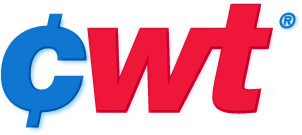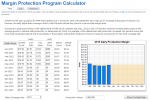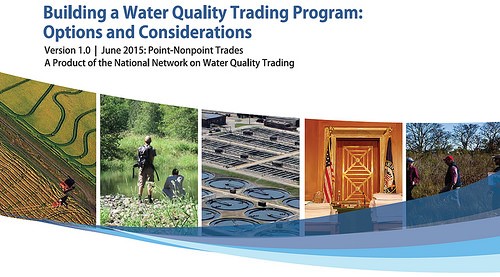The dairy industry today praised leaders of the Senate and House Judiciary committees, the Senate Finance Committee, and the House Ways and Means Committee for expressing  “grave disappointment” over recently approved treaty changes that are likely to severely limit the use of many generic food names in export markets.
“grave disappointment” over recently approved treaty changes that are likely to severely limit the use of many generic food names in export markets.
Among those hurt by the changes are U.S. dairy producers and processors that have relied for decades on well-established cheese names like parmesan and feta.
In a strongly worded letter to the World Intellectual Property Organization (WIPO), the eight congressional leaders objected to an expansion of geographical indications protections that will limit the use of certain food names to a specific region or country without sufficient protections for other users of the names. They also objected to a WIPO decision to force those harmed by the changes to help fund them.
“We urge you to take appropriate steps to rectify the funding situation and to implement the agreement in a fair and balanced way that adequately protects the interests of trademark owners and users of generic names,” the committee leaders wrote. “We will continue to monitor closely these developments and other areas of WIPO’s work to ensure that WIPO effectively functions as a global forum for the protection of intellectual property rights.”
he letter also questioned whether the treaty provisions violated other international trade agreements. “We are very concerned that parties to this agreement will implement it in a manner inconsistent with existing international trade obligations, including under the World Trade Organization’s Agreement on Trade-Related Aspects of International Property Rights,” it said.
Those signing the letter were Senate Judiciary Committee Chairman Chuck Grassley (R-IA) and Ranking Member Patrick Leahy (D-VT), House Judiciary Committee Chairman Bob Goodlatte (R-VA) and Ranking Member John Conyers (D-MI),
Senate Finance Committee Chairman Orrin Hatch (R-UT) and Ranking Member Ron Wyden (D-OR), and House Ways and Means Committee Chairman Paul Ryan (R-WI) and Ranking Member Sandy Levin (D-MI).
Leaders of the National Milk Producers Federation, the U.S. Dairy Export Council, and the International Dairy Foods Association all praised the Congressional letter for strongly objecting to WIPO’s actions.
“The deep concern expressed by the United States and many other WIPO members must be taken seriously not only by WIPO but by the World Trade Organization,” said NMPF President and CEO Jim Mulhern. “These eight congressional leaders are to be commended for objecting to an agreement that hamstrings many users of common or generic food names around the world.”
Tom Suber, president of the U.S. Dairy Export Council, said, “The letter correctly notes that WIPO missed an opportunity to develop a consensus agreement and instead approved a one-sided document that ignores the concerns of the United States and many other WIPO members. If this is WIPO’s model for the future, the United States will need to reassess the benefits of belonging to the organization.”
Added Connie Tipton, president and CEO of the International Dairy Foods Association: “WIPO needed to be called out for pushing through an agreement that includes new geographical indications for a wide range of agricultural and non-agricultural products. The congressional letter does that. We hope WIPO sits up and takes notice.”
The World Intellectual Property Organization is a United Nations agency charged with developing a balanced international intellectual property system. It approved the treaty changes at a meeting in Geneva, Switzerland, in May.
###
The National Milk Producers Federation (NMPF), based in Arlington, Va., develops and carries out policies that advance the well-being of U.S. dairy producers and the cooperatives they collectively own. The members of NMPF’s cooperatives produce the majority of the U.S, milk supply, making NMPF the voice of nearly 32,000 dairy producers on Capitol Hill and with government agencies. For more on NMPF’s activities, visit www.nmpf.org.
The U.S. Dairy Export Council (USDEC) is a non-profit, independent membership organization that represents the global trade interests of U.S. dairy producers, proprietary processors and cooperatives, ingredient suppliers and export traders. Its mission is to enhance U.S. global competitiveness and assist the U.S. industry to increase its global dairy ingredient sales and exports of U.S. dairy products. USDEC accomplishes this through programs in market development that build global demand for U.S. dairy products, resolve market access barriers and advance industry trade policy goals. USDEC is supported by staff across the United States and overseas in Mexico, South America, Asia, Middle East and Europe. The U.S. Dairy Export Council prohibits discrimination on the basis of age, disability, national origin, race, color, religion, creed, gender, sexual orientation, political beliefs, marital status, military status, and arrest or conviction record.
The International Dairy Foods Association (IDFA), Washington, D.C, represents the nation’s dairy manufacturing and marketing industries and their suppliers, with a membership of 550 companies within a $125-billion a year industry. IDFA is composed of three constituent organizations: the Milk Industry Foundation (MIF), the National Cheese Institute (NCI) and the International Ice Cream Association (IICA). IDFA’s nearly 200 dairy processing members run nearly 600 plant operations, and range from large multi-national organizations to single-plant companies. Together they represent more than 85 percent of the milk, cultured products, cheese, ice cream and frozen desserts produced and marketed in the United States. IDFA can be found online at www.idfa.org.
 After the House of Representatives overwhelming approved legislation establishing a voluntary, national standard for labeling foods with genetically modified ingredients, NMPF said it will work closely with the Senate on similar legislation. NMPF said any final bill must meet the needs of America’s dairy farmers.
After the House of Representatives overwhelming approved legislation establishing a voluntary, national standard for labeling foods with genetically modified ingredients, NMPF said it will work closely with the Senate on similar legislation. NMPF said any final bill must meet the needs of America’s dairy farmers.
 In July, members of
In July, members of  Echoing dairy industry concerns, leaders of the Senate and House Judiciary committees, the Senate Finance Committee, and the House Ways and Means Committee last month expressed “grave disappointment” over international treaty changes that are likely to severely limit the use of generic food names in export markets.
Echoing dairy industry concerns, leaders of the Senate and House Judiciary committees, the Senate Finance Committee, and the House Ways and Means Committee last month expressed “grave disappointment” over international treaty changes that are likely to severely limit the use of generic food names in export markets.  Leading up to the Hawaii negotiations, NMPF worked with Congress on three separate written appeals to increase U.S. dairy farmers’ access to foreign markets and achieve a balanced outcome in any Pacific Rim trade agreement.
Leading up to the Hawaii negotiations, NMPF worked with Congress on three separate written appeals to increase U.S. dairy farmers’ access to foreign markets and achieve a balanced outcome in any Pacific Rim trade agreement.  Reacting to the July 31 stalemate in negotiations over the Trans-Pacific Partnership, NMPF pledged to keep working to achieve a dairy package that protects the interests of U.S. farmers.
Reacting to the July 31 stalemate in negotiations over the Trans-Pacific Partnership, NMPF pledged to keep working to achieve a dairy package that protects the interests of U.S. farmers.

 J
J NMPF was among 18 organizations that in June unveiled
NMPF was among 18 organizations that in June unveiled 



